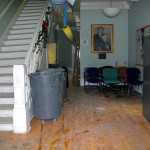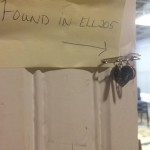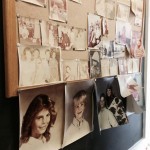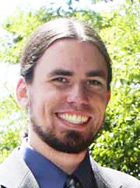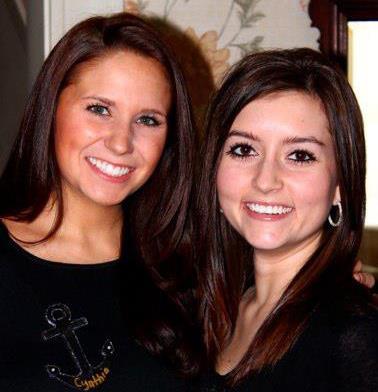Category: News
Sisters come together in faith
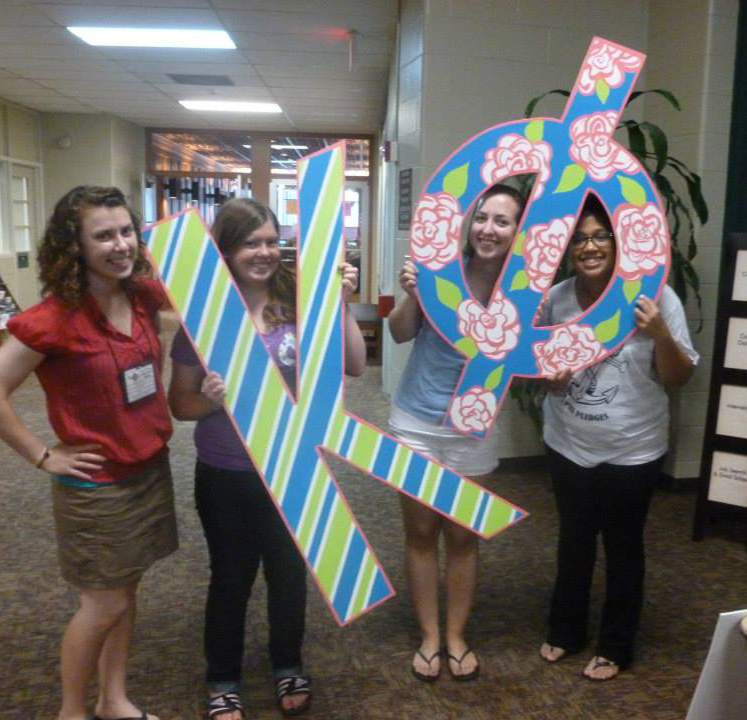
Photo from Facebook
While Ohio Wesleyan has many Greek organizations, Kappa Phi is much lesser-known on campus.
“We are a Christian women’s service sisterhood that is present on campuses across the country,” said junior Marissa Witkovsky, president of Kappa Phi. “In total there are approximately 30 chapters at different universities.”
“We focus on four areas: service, study, worship, and sisterhood,” she said.
Witkovsky said she has been involved with Kappa Phi for the past three years and has been president for the last two.
Sophomore Rebekah Mahoney, Kappa Phi’s pledge coordinator, said she joined the organization the fall of her freshman year and instantly fell in love with it.
“Kappa Phi is literally open to all Christian denominations or those who want to recapture their faith with God,” she said.
Freshman Courtney Cox recently joined this past fall and said she has gained many friendships and a closer connection to her faith.
Ohio Wesleyan’s Beta Gamma chapter of Kappa Phi currently has 20 members with different backgrounds, interests and majors.
Witkovsky, a zoology and botany double major, is also president-elect of the botany/microbiology student board and works three jobs.
Junior Makenna Huff, Kappa Phi chaplain, is a mathematics and religion double major and member of the Outdoor Ministry Team and mathematics student board.
Junior Katie Powell holds dual Greek membership, as she is Kappa Phi’s social chair and a member of Delta Zeta.
All five expressed how they want Kappa Phi to be displayed positively across campus.
“I think it would be beneficial for students to know it’s a welcoming space for women who just want to share their stories with a close group of varied, loving sisters,” Huff said.
During group meetings, which are held every Tuesday and Thursday, Kappa Phi work on service projects, volunteer locally and help with the fall’s Make a Difference Day.
On Jan. 28, the organization held Rose Tea, an event to get others interested.
Witkovsky said the Rose Tea helps to introduce possible members with “different Kappa Phi pillars.”
OWU makes change to staff to improve enrollment
By Breanne Reilly
Transcript Reporter
William Kopp won national awards for his advertising campaigns at Columbus State Community College, and a key part of his new role as Ohio Wesleyan’s chief communication officer will be boosting enrollment.
According to President Rock Jones, Kopp was hired on Jan. 2 after a national search, led by committee chair Professor Glenn Bryan.
Bryan said that the role is critical in presenting the OWU brand and requires many different skills, including aspects of marketing, communication and support of the liberal arts.
In addition to his work at Columbus State, Kopp also worked as a speech writer for Ohio State University, and manager of corporate marketing and executive communications for Columbus-based Battelle Memorial Institute.
He said his goal is to market OWU to prospective students, their parents and alumni.
“Higher education is very competitive right now,” he said, adding that attracting students and donors through marketing is an important aspect. “…Marketing is really getting your story out there. You don’t want to be the best kept secret, you don’t want to be a hidden gem, you want everybody to know the good work going on here.”
Kopp said his main goals are to make the OWU website more “responsive” and easier to use on mobile devices, and increase and improve the use of video.
He spent the past few weeks working with a videographer to interview students about the OWU Connection, experiences in Travel Learning Courses and trips funded by Theory to Practice Grants.
“I want to find out what the real brand of Ohio Wesleyan is so I can tell that story,” Kopp said. “By brand I don’t mean slogan, I don’t mean a trademark or logo, it’s the essence of the place.”
Kopp said he interviewed nine students and created 13 different videos. The videos were shot and edited by a freelance videographer, Mark Van Horn, who previously worked at WCMH-TV.
Kopp said Van Horn’s work has won national awards and OWU will be paying him $960.
The videos will be used to raise funds for student scholarships and shown at the Board of Trustees’ retreat on Feb. 5-7.
According to Jones, the retreat will be held in Naples, Florida. The purpose of the retreat is to review the Strategic Plan, review the proposed case statement for the upcoming campaign and to review the Student Housing Master Plan.
Jones said this is the first retreat in five years and it has the “best attendance” he has witnessed since he became president.
Kopp said the amount of students applying and enrolled at OWU has not decreased, but they want to increase numbers by sharing stories of successful OWU graduates with prospective students and their families.
“Parents want to know there is a future post-graduation,” Kopp said. “A survey of the class of 2013 showed that 94 percent of OWU graduates were employed, in graduate school or both.”
Dave Wottle, who has worked as interim vice president for enrollment since last fall, said Jones’ goal for the university is to attract 590 prospective students for the 2014 fall semester.
He added that a student’s academic record is the most important factor in determining acceptance.
Students who have a 3.5 or higher grade point average don’t have to submit their ACT or SAT test score.
Wottle said he also wants to improve the academic profile of the enrolled students, maximize the amount of revenue received from student tuition.
He also hopes to enroll a class diverse in socioeconomic class, ethnicity and international residency.
Weather or not, classes continue
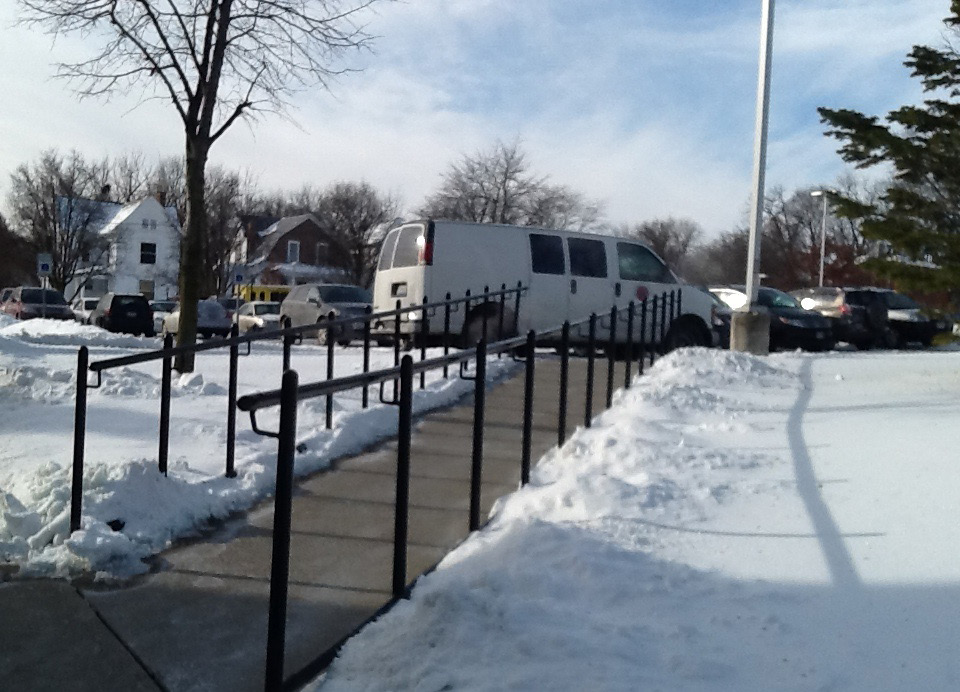
Ohio Wesleyan did not cancel classes.
Photo by Jane Suttmeier
By Caleb Dorfman
Transcript Reporter
A cold spell sent temperatures well below zero last week, and raised the question of which weather conditions would lead to cancelled classes.
According to Craig Ullom, vice president of Student Affairs, President Rock Jones consults a group of individuals from various departments.
This group includes members of administration and finance, Academic Affairs, Student Affairs, Health Services, Public Safety and Buildings and Grounds.
“Information considered by the group comes from various sources including the NOAA National Weather Service, local weather information sources, and the Delaware County Emergency Management Center,” Ullom said.
Ullom said the team decided that in this particular weather incident, while it was very cold, there was no risk to someone walking to class as long as they dressed appropriately.
“I know it was very cold, because I walk to work every day,” he said.
Jones said if classes were cancelled, then they would also have to cancel sports practices, rehearsals and any other student events on campus.
A weather advisory email from Cole Hatcher, director of Media and Community Relations, stated classes would be cancelled if a Level 3 Snow Emergency was called.
According to the Delaware County Sheriff’s Department, a Level 3 Snow Emergency is put into effect when roadways are too hazardous to drive on.
Emails from both Jones and Hatcher gave students and faculty advice on how to dress for the weather.
According to Jones, if this type of weather occurs again, the university would increase the number of vans transporting students around campus.
Jones said he would also like to see the vans run later in the day.
The vans, which were driven by student, faculty and staff volunteers, ran from 7:30 a.m. until 5 p.m. on Tuesday, and from 7:30 a.m. until noon on Wednesday.
Temperatures on Tuesday dropped as low as 14 degrees below zero, with wind chill temperatures as low as 25 degrees below zero, according to the Weather Channel.
Junior Brandy Booth said she has lived in Ohio her entire life, and she has never experienced weather like this.
To cope with the cold, Booth said she “wore a lot of layers” and carpooled.
SLUsh 2014 brings scores of students
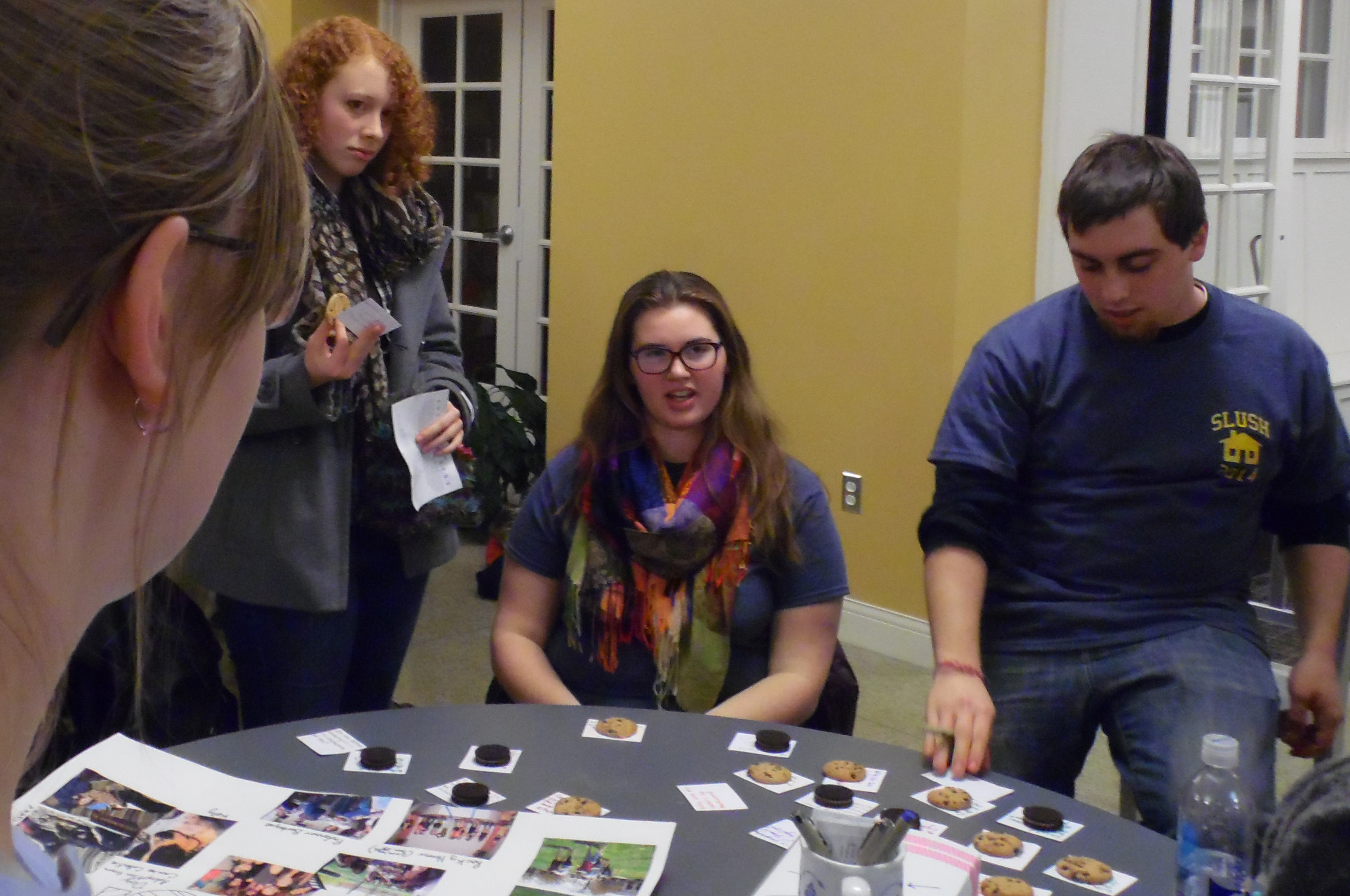
Photo by Spenser Hickey
The snow and ice were an appropriate setting for many students who found new homes for next semester in this year’s Small Living Unit (SLU) recruitment.
SLUsh is the week-long period where the campus’s SLUs recruit residents. This year, they had a much larger number of applicants than usual, according to house moderators.
Applicants were informed of each SLU’s decision on Feb. 4 and have until the 10th to decide.
The process began with an all-SLU event Jan. 27 in Stuyvesant Hall to introduce interested student to each of the seven houses on campus.
Each SLU has a central theme. Houses include the Modern Foreign Language House (MFL), Citizens of the World House (COW), House of Thought (HoT), Interfaith House (IF), House of Peace and Justice (P&J), Tree House, and Women’s House (WoHo).
Freshman McKenna Brewer, applied to both COW and WoHo, and thought the process was fairly straightforward.
“I liked the smaller events at each of the houses I went to as well,” she said.
Brewer found out on Tuesday that she was accepted as a new member of WoHo.
Senior Alex D’Amore-Braver, moderator of House of Thought, said his house had five spots to fill and held 18 interviews.
He said this made the process very time-consuming, as they spent ten and a half hours holding interviews and deliberating.
While this may have led to some students being written off early, D’Amore-Braver said they “have a fantastic roster for next year.”
Senior Ashley Madera, moderator of Citizens of the World House, said they also have five full-year spots, as well as two for fall semester.
When searching for potential members, they consider three major aspects: passion, individuality and willingness to make COW their home.
“We want applicants who want to make COW their second home and not just a bed to sleep in,” she said.
Madera said they received 25 applications, which made the process a lot longer than usual.
“We really had to pick those individuals who stood out from the rest in all these areas rather than just one or two,” she said.
Sophomore Margot Reed, a resident of P&J, said her house accepted seven new members for next semester out of 21 applicants.
“I think one of the biggest challenges that created was trying to pick people that would please everybody already in the house,” she said.
Reed said it finding a consensus among the 17 current members on one person is difficult, and even more so when there are eight spots.
Like House of Thought and Citizens of the World House, the Modern Foreign Language House also has five spots open.
Senior Kate Johnson, MFL moderator, said they look for dedication to the house’s mission, an open mind and a personality that matches well with current members.
“We are looking for students who are studying languages or native speakers of non-English languages who have a strong interest in promoting intercultural understanding,” she said.
To evaluate interested students, each SLU held a two-hour long open house, providing applicants with interview sign-ups for Feb. 1 and 2.
The week’s events concluded on Jan. 31, with a screening of “Rocky Horror Picture Show” by the House of Thought, other SLU residents and non-members.
Atheists seek space
Atheist and agnostic students now have access to campus resources provided by junior Avery Winston and senior Maddy Leader, with help from staff of the Chaplain’s and Service Learning Offices.
Currently, these resources are limited to a collection of books on the fourth floor of Hamilton-Williams Campus Center.
Last spring, Winston proposed a resource center for atheist and agnostic students, but the proposal was turned down due to a lack of funds, space and demand. Instead, Winston decided to set up the bookcase for interested students.
“It’s not just about religion; it’s about creating a safe zone for (atheist and agnostic) students,” he said. “There are books here about losing faith, about how to come out (as an atheist), about getting harmed by faith, living well and positively without faith.
“It’s just about showing people they’re not alone…I’m not worried about what’s taught in classrooms or anything.”
The books currently available are mostly from Winston’s personal collection and others donated by friends and alumni.
Winston said he is also seeking $500 from WCSA to get enough books to fill the case, a request that is still under review.
“We deserve something on campus that caters to people of our mindset,” he said.
Leader said her motivation comes in part from a perceived prejudice against agnostic and atheist students that she has encountered as a member of Freethinkers, a campus club that includes diverse views on faith and promotes open discussion of philosophical issues.
After becoming a cabinet member for Freethinkers, Leader and others posted calendars around campus outlining secular holidays.
“The next day, most had been torn down,” Leader said. “…One had been vandalized — scratched up with black marker so you couldn’t tell what was on it.”
Despite this, both say they have found an abundance of support from faith-based organizations on campus. In particular, Winston and Leader point to chaplains Jon Powers and William Hayes, the adviser for Freethinkers, as sources of support for their cause.
They also said Sally Leber, director of the Community Service Learning Office, helped them get permission to use the bookcase in HWCC to make these materials available to students.
Both students wanted to be clear they are merely trying to show support for atheist or agnostic students on campus.
According to Winston, while the materials may espouse a view that is not religious, they are not “proselytizing against faith.”
He said the effort is merely to contribute to the “diversity of thought” on campus and hopes others will understand that.
Students find their home away from home in Greek Life
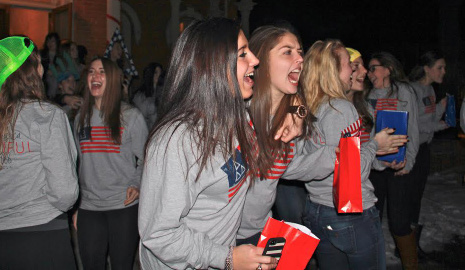
The week after winter break, unaffiliated men and women geared up to go through recruitment in hopes of finding a fraternity or sorority to call home.
Even though these two events occurred during the same time, they were carried out differently.
The goal of recruitment for both fraternities and sororities is to expand their chapters, and both sets of organizations carry out the processes differently. While the fraternities have a more relaxed style of recruitment, sororities have a more regimented recruitment.
Fraternities have events spanning over two weeks, culminating in men receiving bids, potentially from multiple fraternities and choosing to sign them, deferring or declining. Sorority recruitment takes place in a four-day period.
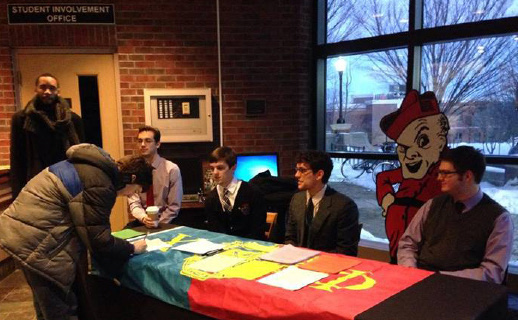
“Women’s fraternity and sorority recruitment on this campus abide by and follow NPC (National Panhellenic Conference) guidelines when running recruitment and comprise of a formal structure taking place over a specific time period determined by NPC standards,” said senior Kathryn Pickens, Vice President of Recruitment on the Panhellenic Council.
Levi Harrell, the interim Interfraternity Council Advisor, describes fraternity recruitment as “a semi-structured formal recruitment system that last two weeks and allows unaffiliated men to go to various events hosted by all eight of our active chapters on-campus.”
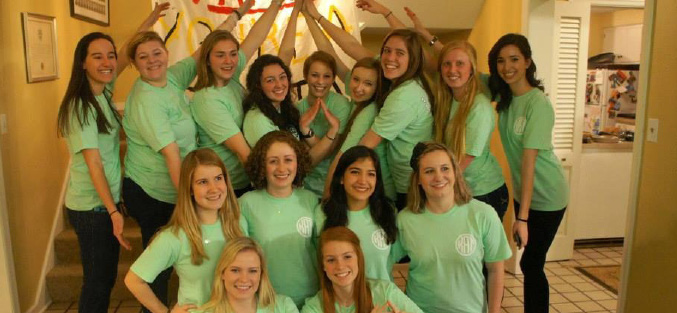
Because of the different styles of recruitment, each fraternity and sorority has a different way of attracting potential new members.
Junior Garrett Van Schaick, Sigma Chi president, said that each fraternity has two dates in which potential members would be able to provide “different spotlights” on the individual houses.
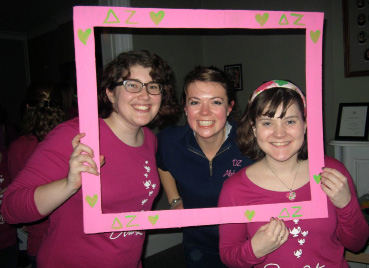
On the other hand, sorority recruitment is in one weekend, where all of the potential new members go to each house a period of time to get to know the women of the sorority.
Sophomore Sophia Apostolou, the incoming Vice President of Recruitment for Delta Delta Delta said she prefers the sorority style of recruitment because she feels “that it is the best way to get to know the girls and figure out how their interests and values match up.”
Other sorority representatives agree that the system implemented by the NPC is effective in recruiting potential new members.
“We believe formal recruitment is a fair way for the women going through [recruitment] to see each of the five houses and what fits best for them individually,” said junior Jordan Bernstein, chief executive officer of Kappa Alpha Theta.
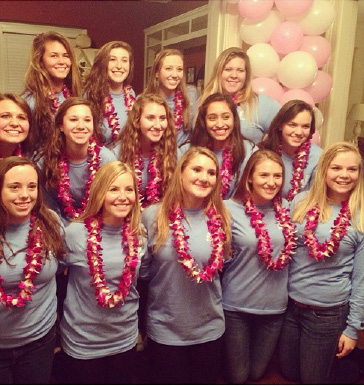
Senior Malcolm Clark, IFC President, said the fraternity recruitment process is “constantly a work in progress.”
“We have been trying to implement suggestions from members from all parts of the Ohio Wesleyan community,” he said.
Junior Rodrigo Ravaglia, president of Delta Tau Delta, also suggests changes in the fraternity recruitment style. He said that “more efficient communication and coordination” would prevent similar events from occurring close to each other.
Drying out Elliott Hall, one book at a time
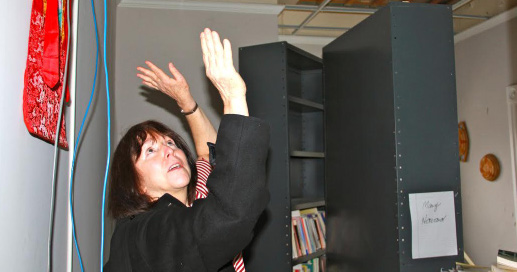
Frigid temperatures, in combination with the age of the historic building, caused the pipe to burst. This in turn triggered the building’s sprinkler system. A pipe above Howard’s office was the source of the leak, causing extensive damage to her personal and professional items.
“I breast fed my babies in this chair, consoled many students in this chair,” Howard said of the lounge chair that became collateral damage of the Elliott flood.
“But at the end of the day, everyone was safe. I totaled my car last year when I hit a cow, and that was something. This, this is nothing.”
When Public Safety Officer Jay McCann walked into the foyer of Elliott Hall the evening of Jan. 8, a waterfall greeted him.
“My first feelings can be described as very emotional,” McCann said. “Here stands the matriarch of our community and the origins of OWU, and she is hurting. It was as if you could feel the pain of the building as you walked through. It was expressed by all those who saw it…..sad day.”
President Rock Jones walked through the building a few hours after the incident was reported, and said the damage he saw was “just devastating.”
“I received a phone call probably around 11 p.m. from Dan Hitchell who broke me the news,” Jones said. “When we saw the extent of the damage, we realized the building had to be closed. There was still a lot of water, but you know, the building and grounds staff worked all night long and did a really terrific job working to dry the building out.”
The flooding that took McCann by such surprise was caused by a pipe in the sprinkler system that burst due to the extreme cold wave, or the ‘Polar Vortex,’ plaguing Delaware and the rest of the Midwest over the last two months. Director of physical plant operations Peter Schantz said the flooding could not have been prevented.
“The fire suppression system functioned per its design,” Schantz said. “Unfortunately, aspects of the design made the system vulnerable to extreme cold weather. It took the severe cold weather caused by the polar vortex event in early January to reveal the vulnerable aspects of the system. We are taking steps to change the system design to prevent this in the future.”
Those steps include immediately checking the status of all of OWU’s water and sprinkler systems. Jones said there is a concern for the buildings on campus, as the cold weather shows no signs of letting up soon. The Corns building has the same sprinkler system as Elliott.
“We are in the midst of another, even longer, cold spell, so they (B&G) are being very diligent in making sure all of our pipes are running, but it’s a very scary time. “
Had Public Safety not initially reported the flooding thus making it possible for the water to the building to be turned off, Schantz said the damage could have been much more severe.
“We estimate the broken sprinkler line released about 12,000 gallons of water per hour,” he said.
Thirty to 90 minutes elapsed before the break was isolated, meaning 6,000 to 18,000 gallons of water cascaded through Elliott.
“The building and contents would have absorbed significantly more water with each additional hour that water was released,” Schantz said.
Because the buildings renovation plan is not completely finalized nor has the total damage been fully assessed, Schantz said it was not possible to disclose just how much it will cost to restore Elliott Hall in full. Hitchell told staff at their January meeting the cost could be $250,000, with the university’s insurance covering all but $50,000, the plan’s deductible.
The renovations for Elliott will not affect the construction on the JayWalk or the restoration of Merrick Hall as those projects are assigned to different contractors, but that doesn’t mean the renovations will move at a quicker pace. According to Jones, delays will surely occur as buildings across the Midwest are experiencing pipe bursts, and increasing the demand for building materials.
“The big issue that could effect us is that there were so many water pipe breaks all across this part of the country that there is going to be a surge in demand for things like carpet and drywall ceiling tiles, and fillers for cracks,” Jones said. “So, there is a significant, sudden need for the hundreds and hundreds of buildings across the Midwest that have suffered from this kind of damage.”
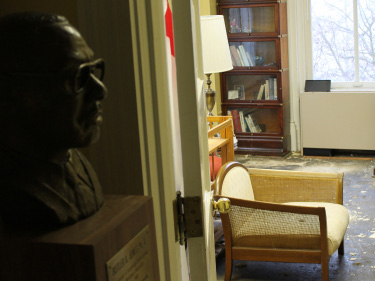
Some private universities had as many as 8 buildings with burst water lines, Hitchell told faculty.
Elliott, the oldest building on Ohio Wesleyan University’s campus (OWU), is on the National Register of Historic Places, so all renovations must be carried out in compliance with the registry’s requirements. Jones said although OWU will receive no financial backing from the registry towards the renovations, the administration is dedicated to ensuring Elliott maintains it’s historic appearance.
“We certainly have a strong desire to restore the historic beauty and feel of the building, and during the restorations we will be keeping that mentality,” Jones said. “And, as unfortunate as the flooding is, it is a chance to add some modern amenities to the building. We want to get this fixed as soon as possible, but we also want to take time to make sure we do it right.
“We’ve met with the chairs of the departments to look into improvements for the building…it does give us a chance to make them and make the building better than ever.”
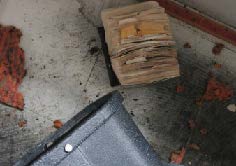
Video from Jay McCann
Jones said accommodating the faculty housed in Elliot is one of his biggest concerns. The university relocated the departments of history, politics and government, international studies, as well as the Historian magazine, to the Stuart Annex and moved the Communications Department has been relocated to 4 Williams Drive, working in what Jones calls “difficult circumstances.”
Despite the difficulty of moving and salvaging office supplies and personal items, Cole Hatcher, director of media and community relations, is staying on the bright side, saying the transition was quick enough that the department lost little to no time getting back to work.
“We haven’t stopped or even delayed any work because of the flooding,” Hatcher said. “Currently, we are working from 4 Williams Drive in space that had been used by the Student Health Center during the Stuyvesant Hall renovation. Former exam rooms are now offices. The space accommodates our full staff and student interns. We’ve been very lucky.”
Upon hearing that no one was injured during the flooding, Hatcher said his immediate concern was for the expensive equipment the department uses on a regular basis.
“I wanted to make sure that our cameras and web streaming equipment survived,” Hatcher said. “And everything did, which also has helped us continue our work. Public Safety was kind enough to verify this for me as the scene was unfolding. We also had many filing cabinets filled with paper documents and photos, but those fared relatively well, too.”
Professor of Anthropology Mary Howard’s office experienced the most devastating of blows, as the pipe bust occurred in her office’s ceiling. However, she, like Hatcher, is upbeat.
”Change is always challenging for all of us but since life is change, it makes sense to me to just go with the flow,” Howard said. “Besides, based on my observations of national and international poverty, this slight disruption seems pale in comparison to me.”
Howard said the OWU as a whole has been “incredibly kind and caring” in helping her with the transition.
“We owe a large debt of gratitude to the Buildings and Grounds people who must have filled dozens of dump trucks with discarded books and file contents.”
‘Reverse culture shock’ when students return to OWU after being abroad
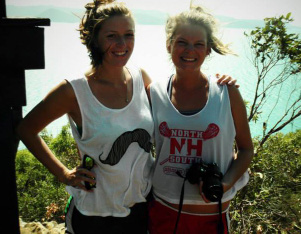
Coming back to a college campus after a long break is usually exciting for students.
After spending a significant period of time at home, many students are happy to be back on campus, with the freedoms that comes along with being in college.
But for students coming back from being abroad for a semester, the adjustment to coming back onto campus can be more difficult for them.
Juniors Kelsey Gallaher, Lauren Moore and Lidia Mowad all participated in the University College Cork, Ireland program this past fall.
Mowad said she picked this specific program because she spent a summer in Ireland four years ago to learn about the conflict in Northern Ireland.
Junior Jordan Bernstein also spent the fall semester away from campus, but she had a different experience than other students who were abroad.
Bernstein participated in the Wesleyan in Washington program in Washington D.C., where she had an internship with Senator Kay Hagan (D-NC.)
“My focus is on American government and I wanted to be in the heart of what I have been learning about and what I love,” she said.
Bernstein’s roommate, junior Eilee Foley spent her fall semester abroad at James Cook University (JCU) in Australia and junior Hannah Snapp participated in the Salamanca, Spain program.
Foley said she decided to study abroad in Australia because JCU offered her fulfilling psychology courses and she also got the opportunity to live in a small town on a beach.
Each student that was abroad has said that adjusting to life back on campus after being gone for a semester has been hard.
“It is difficult for everyone that comes back from taking some time abroad because there is a definite disconnect between yourself and the campus,” Snapp said.
“I’m still struggling with some aspects but I have incredible friends that are making the transition much better. I also have great friends who were also abroad and with whom I can talk.”
Mowad said she is feeling reverse culture shock upon her return to the United States.
“For the first month, it’s going to be like you are just going through the motions; trying to get back into society,” she said.
Gallaher said her biggest adjustment to being back at Ohio Wesleyan is the time change; and the time difference was also a big struggle for her while she was in Ireland.
Bernstein, Foley and Moore all said that adjusting back to the pace of college life and OWU has been challenging, but they are excited to be back in the community with their friends.
One of the biggest frustrations that some of the students faced prior to returning to OWU was not knowing where they were living once they came back to campus.
“My abroad friends and I kept calling and emailing them [Residential Life], and finally I heard on the Wednesday before classes started,” Moore said.
“It was unnerving to not know who my roommates would be, how to pack and where I’d be placed until then.”
Andrew Peterson, assistant director of Residential Life, said three things go into the planning of rooming assignments: where spots are open on campus, seniority or priority number and preferences of residence halls.
“The biggest challenge is assigning people to the building/room/roommates that they want to live with or with whom they are compatible,” Peterson said.
“The difficulty is compounded as we don’t know where those spaces may be until very late in the semester when we hear about students going abroad in the spring, leaving the university or graduating.”
Additionally, Peterson said that ResLife cannot please every student all the time, and that the lack of off-campus options has nothing to do with the struggle of finding rooms for students coming back after a semester away.
Snapp said she is not pleased with her living situation and she is currently looking to move residential halls.
However, some of the other students said that they are happy with their living situation.
“Luckily, I ended up rooming with my four best friends who were all abroad too,” Foley said. “ResLife came through in the end and provided us with a lovely dorm in Smith Hall.”
Every person who participated in a study abroad program said it changed their outlook on life, and may have impacted potential career goals.
Mowad said she feels more cultured and has learned to become more observant of the world.
Bernstein said her opportunity to work in government in D.C. has helped her to figure out her area of focus.
According to Snapp, she learned more about herself during her time aboard and developed a deeper appreciation for travel.
Most students coming back to campus said that they were most excited to be back within the OWU community.
Foley said she missed the simple things, like the long lunch lines in the food court and seeing friendly faces around campus.
“I’m definitely putting my all into everything I do on campus, and I’ve been open to trying new things and not letting an opportune moment slip by,” Moore said.
“Those four months went by way too fast, and I’m going to use every day here to appreciate everything here, because college has an expiration date!”
Pres. Obama aims spotlight at college sexual violence
By Spenser Hickey and Bre Reilly
Editor-in-Chief and Transcript Correspondent
One in five women attending college in the US experience some form of sexual violence, and only 12 percent of them report it.
While these statistics have been pointed out by activist groups for years, President Obama made national headlines when he referenced them in a video statement last week.
“I called members of my cabinet to the White House to deal with a challenge that affects so many families and communities: the crime, the outrage, of sexual violence,” Obama said in the video.
The cabinet members involved include Attorney General Eric Holder, Defense Secretary Chuck Hagel, Education Secretary Arnie Duncan and Health and Human Services Secretary Kathleen Sibelius.
Vice President Joe Biden, author of the Violence Against Women Act, is also involved in the White House’s task force aimed at protecting students of all genders from sexual violence.
The task force has 90 days to make recommendations for colleges on how to prevent and respond to reports of sexual violence.
It will also work to increase public awareness of how specific universities handle cases and increase federal means of holding universities accountable.
“We’ve got to teach young people – men and women – to be brave enough to stand up and help put an end to these crimes,” Obama said.
“We’ve especially got to teach young men to show women the respect they deserve. I want every young man in America to know that real men don’t hurt women.”
The statement came after the White House Council on Women and Girls released a report titled “Rape and Sexual Assault: A Renewed Call to Action” which found that nearly 22 million women and 1.6 million men in the US have been raped.
“That’s totally unacceptable,” he said.
“…College should be a place where our young people feel secure and confident, so they can go as far as their talents will take them.”
At Ohio Wesleyan, the President’s statement was met with support from administrators and student activists.
Richelle Schrock, director of the Women’s and Gender Studies department, said that the creation of the task force is “a step in the right direction” and that the statistics cited are “a distressing reality.”
“I appreciated President Obama’s remarks in terms of showing support and solidarity with survivors when he stated that, ‘I have your backs,’” Schrock said in an email.
“This idea of ‘having the backs’ of survivors challenges victim-blaming narratives, which often predominate in our discussions of sexual assault.”
She also said she was curious to see if the task force would lead to increased funding for sexual assault prevention and awareness programs.
“Currently, many sexual assault awareness programs and organizations nationwide rely on funding from grants, which means their resources fluctuate on a yearly basis,” Schrock said.
Kimberlie Goldsberry, dean of students, said that any form of assault is “a really tragic thing” to experience.
“The only way we can try to rectify that is to continue to educate people and hold people accountable,” she said.
According to annual security reports provided by Public Safety (PS), at least 26 sexual assaults occurred on campus from 2008 to 2012, and all of them took place in student housing.
While the daily crime logs only list 11 forcible sex offenses – forms of rape or sexual imposition – this is not unusual.
As part of the annual tabulation, PS submits their list of reports to Counseling Services, the Chaplain’s Office and the Student Health Center.
These offices then add additional cases they know of where survivors were not comfortable going to PS, maintaining survivors’ confidentiality.
According to public records requests submitted to the Delaware Police Department, none of the forcible sex offenses reported from 2008 to 2013 as occurring on campus have led to a conviction or even a trial.
Six are listed as investigation pending and seven as exceptionally cleared, meaning no arrest was made even though there was a suspect.
Senior Claire Hackett, one of two campus campaign coordinators for the V-Day 2014 movement, said that sexual assault cases can be hard to prove without evidence collected by a rape kit.
V-Day is an international movement working to end domestic and sexual violence against women and girls.
Recent campaigns have focused around the statistic that one in three women will experience some form of violence in their lifetimes.
Hackett said that while only 26 cases were reported to University officials, sexual violence happens a lot more than people realize.
“You don’t realize how many women that you interact with (on campus) have been sexually assaulted,” she said.
Hackett said this was something that she’s learned through working in The Vagina Monologues at OWU.
While many participants have not survived sexual violence, “a significant number” have and benefit from the series of readings, which focus on women’s experience.
“It’s really important to the women who go through it, because it is empowering for them, especially if they’re survivors of sexual assault,” she said.
Both Hackett and junior Meredith Harrison, moderator of the Women’s House, said they agreed with President Obama’s statement that college sexual violence is a national issue.
“It definitely affects everybody,” Harrison said.
“I really liked that Obama addressed in his speech that it’s not just a women’s issue, it’s a men’s issue too and we need to be talking about how men can stop sexual assault.”
Hackett said that while sexual violence on college campuses is still a step in the right direction, it is one that primarily focuses on the middle and upper classes that have access to college.
Harrison added that women on Native American reservations also face a high risk of sexual violence, but that the statistics regarding college sexual violence are also “very high.”
“Something needs to be done,” she said.
“…Since I’ve been in college, there’ve been so many stories in the news and in the media about women in high school or women in college who have had bad experiences with reporting sexual assault.”
The past few years have seen a number of incidents where colleges faced federal investigation after they misreported crime statistics, in violation of the Clery Act, or pressured survivors into not reporting assaults.
The University of North Carolina, Penn State, the University of Southern California, Amherst, Dartmouth, Yale and Vanderbilt are just some of the colleges who’ve been accused of violating either the Clery Act or Title IX, a federal gender equity law with provisions to help survivors of sexual violence.
Hackett said that Ohio Wesleyan has a lot of things that support those who are survivors of sexual assault, but there’s always room for more.
“I think we could always increase the programming that encourages a safe environment for survivors,” she said.
“I think we raise a lot of awareness, a lot of consciousness-raising and have a lot of speak outs and marches and stuff, but I think we could be doing more for healing,” Harrison said.
She also said universities in general should expel perpetrators of sexual violence if they are convicted, as their continued presence on a campus can have “triggering” effects on the survivor.
“That is something no survivor should have to experience,” said Harrison.

